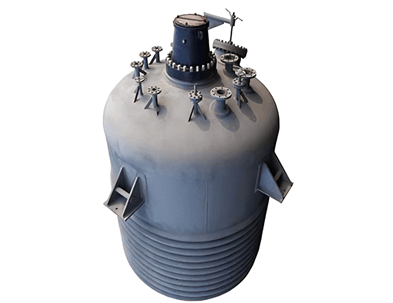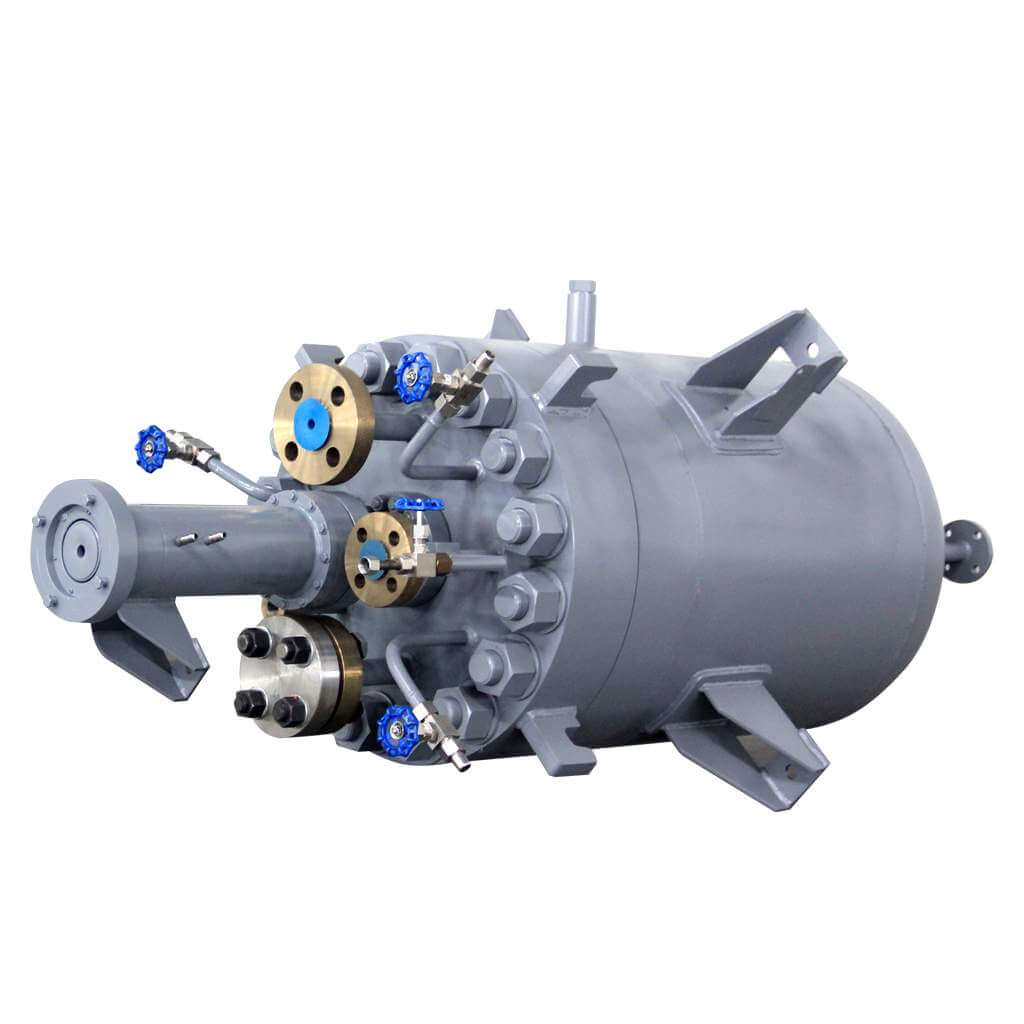

Hydrogenation Reactor
Hydrogenation Reactor:used in chemical synthesis, pharmaceutical manufacturing, food processing, and other fields.
Material
stainless steel (316, 304), carbon steel, others
Capacity (L)
10-10000+
Mixing system
anchor, paddle, frame and others
Heating system
electric heating, oil heating and others
Hydrogenation reactors are widely used in various catalytic reaction speeds, high-pressure and high-temperature generation, hydrogenation reactions, vapor-liquid two-phase, liquid-liquid two-phase, chemical reactions, corrosion detection, precision processing, supercritical extraction, and other applications. Mainly distributed in petrochemical equipment, organic chemistry, pharmaceutical industry, polymer synthesis, metallurgical industry, and other industries. At the same time, it has the characteristics of heat resistance, corrosion resistance, and high production capacity.
Request a quoteThe hydrogenation reactor plays an important role in daily life. The entire equipment has a simple structure, which greatly facilitates the disassembly and assembly work and improves work efficiency. Hydrogenation reactors are widely used in petroleum refining, chemical industry, rubber, pesticides, dyes, pharmaceuticals, food, and other industries. The upper part of its gasket houses the tachometer coil. When the integrated stirrer and the inner magnetic ring rotate, the tachometer coil generates an induced electromotive force, which corresponds to the stirring speed. The potential is transmitted to a tachometer to indicate the stirring speed.

The sealing effect of the hydrogenation reactor
1.The sealing effect of the hydrogenation reactor is the key, and the sealing surface should also be carefully taken care of. Before each installation, use soft paper or cloth to clean the left and right sealing surfaces. Be careful not to scratch the sealing surfaces of the cauldron body and cauldron lid. If implemented effectively, it can be used for a long time.
2.Common industrial hydrogenation reactors must have sufficient strength. Because when doing esterification, it must be pressurized. If you do a small trial, the hydrogenation reactor used is actually a pressure-resistant stainless steel reactor. If the stainless steel reactor has an impact on the catalyst, the reactor should be lined with PTFE. The replaced hydrogen can be passed into the reservoir during small tests or small tests. Generally, chemical companies often have reservoirs, which must be sewage wells. When releasing hydrogen, release it slowly pump it, and then flush it with N2 for replacement.
3.If the catalyst is palladium carbon, it will not easily catch fire when placed in a humid place. The hydrogenation reactor kettle must be added quickly when adding materials, and then the aqueous solution commonly used in the reaction is added. After the reaction in the hydrogenation reactor is completed, it must be refrigerated before loading, then the hydrogen, fill the exhaust pipe with nitrogen, and then press the filter and purchase the catalyst.
4.If hot extraction is necessary, the hydrogen must be discharged into the filter press. The catalyst is cleaned with organic solvent and stored in a sealed container. Generally, catalysts commonly used in small experiments will be used until the specificity is lost. If it is very rare, remove it after doing it once. The catalyst can only be removed when it is required to be active, so there is no need to worry too much about the risks of the catalyst.
5.When performing esterification in a hydrogenation reactor, the sealing of the equipment must be checked to ensure that it does not leak steam or liquid before the reaction can proceed. Also check the pressure gauge and temperature gauge on the hydrogenation reactor, which must be corrected one by one.

Routine maintenance of the hydrogenation reactor
1.Check whether the flange and motor shaft of the hydrogenation reactor are loose, and check whether the protective cover is intact and reliable.
2.Enter the hydrogenation reactor regularly to check the conditions of stirring, coils, and other annotations in the pot, tighten loose anchor bolts, and replace relevant parts if necessary.
3.Always listen for abnormal vibrations and sounds in the hydrogenation reactor.
4.Check whether the hydrogenation reactor itself has cracks, deformation, corrosion, leakage, etc., whether the insulation, paint, etc. are complete, and whether it has fallen or been burned.
5.Keep the mixing shaft clean and exposed to light, and check whether the rotation direction of the mixing shaft is clockwise when connecting the shaft with the round nut, and it is prohibited to turn over.
6.Check whether all the inlet and outlet valves of the hydrogenation reactor are in good condition and can be used. If they are not in good condition, they must be dealt with properly.
7.Always check whether there is oil leakage in the reducer and whether the seal of the hydrogenation reactor is intact. Check whether the gasoline pump is oiled, check the oil level and oil quality changes in the reducer, check whether there is insufficient oil in the mechanical seal oil box of the hydrogenation reactor, and add or upgrade the corresponding engine oil if necessary.
8.Check whether the valves, glass membranes, barometers, thermometers, and other equipment of the hydrogenation reactor are accurate, flexible, and powerful. Check whether the valves and air pressure gauge have been calibrated and the lead seals are intact, whether the green line of the air pressure gauge is properly drawn, and whether the glass film is leaking.
Hydrogenation reactors have the advantages of heat resistance, corrosion resistance, and high throughput, and are widely used in pharmaceuticals, beverages, chemical plants, color pastes, epoxy resins, scientific research, and other industrial sectors. Hydrogenation reactors are common reaction equipment in chemical plants. General industrial hydrogenation reactors must withstand pressure, but for hydrogenation, they generally need to be pressurized. The daily maintenance of the hydrogenation reactor is very necessary. Its daily maintenance is related to its service life, so it must be properly maintained to extend its service life.




